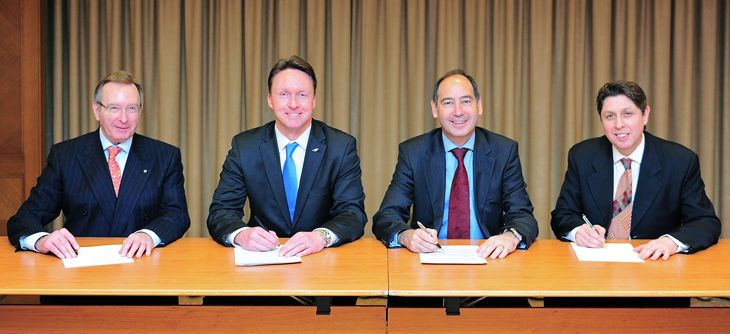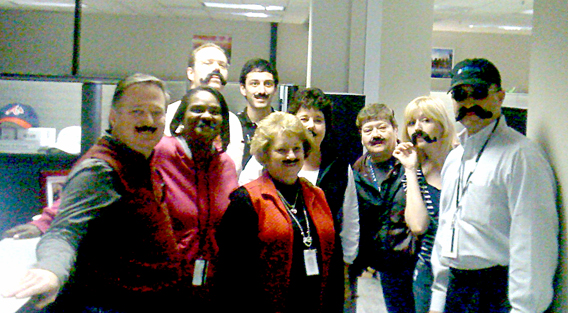| 
You want to get a forwarder really
mad?
As always, it depends on who is telling
the joke and to whom, but it goes something like this:
“Everyone seems to know what the
world’s oldest profession is; can you guess what the second oldest
is?”
Well to hear FIATA tell of it—the
time is long past for forwarders to get some respect.
And if you ask the forwarders who were
in Istanbul last month, it turns out that the Cargo Agency Conference
barely had a quorum; about 25 airlines participated in its proceedings,
a small percentage of the member airlines.
Apparently enough was enough and FIATA
drew a line in the sand with a deadline of 24 of months to achieve needed
organized change.
In a nutshell, the forwarders don’t
want to be regulated by IATA and believe IATA accreditation for forwarders
is no longer required.
The IATA/FIATA training agreement was
terminated.
Upshot is during early 2011 the forwarders
are mad as hell and not about to take it anymore as they boldly march
on seeking and hoping for cooperation and the pursuit of mutual interest.
IATA governance is an arcane and complicated
matter handled with hordes of lawyers.
Whether the organization can reform and
widen its approach by providing a more inclusive tent, or remain the
ossified body on display, is yet to be determined.
Might be cool to be the proverbial fly
on the wall at the upcoming TIACA AGM in Bangkok, April 17-19, to witness
first hand a bit of interaction between FIATA and IATA representatives,
following the new second FIATA press release within a couple of days,
titled:
“FIATA Gets Into The Driver’s
Seat”.
Do we detect some pent up frustration
when the FIATA president is quoted as: “…the airline industry,
represented by IATA, should finally face reality, and recognize forwarders
as their most important customer group, and treat logistics services
providers accordingly.”
Is the quoted forwarders’ “anger”
directed at the airlines or at the IATA bureaucracy? How does one differentiate
between the two and does it really matter, or only the results count?
Judging by the wording of the press releases,
the target seems to be IATA.
It will be fascinating to see how it evolves,
whether this is reduced to a tempest in a teapot between members of
the IATA/FIATA Consultative Council or if it manages to raise the temperature
enough to get airline cargo executives to feel sufficiently inconvenienced
to intervene.
When pushed to come up with some answers,
will they choose to hide behind the “it’s the IATA secretariat”
excuse. Does the push back to the forwarders’ long standing efforts
to gain some genuine say in agency affairs stem from the airlines?

Hopes are high at World Cargo
Symposium as the newly-formed Global Air Cargo Advisory Group
(GACAG) signed on the dotted line, in Istanbul, a manifesto laying
down the basic principles of GACAG. Pictured (l to r) are Jean-Claude
Delen, President of FIATA, Michael Steen, Chairman of TIACA, Des
Vertannes, IATA, Global Head of Cargo and Chris Welsh, General
Manager, Campaigns, FTA for GSF.
Now as a tough confrontation dust
up emerges between IATA and FIATA, two founding GACAG members,
question is raised, can/will the new group heal the rift?
|
IATA and FIATA are two of the four
legs of that newly formed GACAG that was announced in Amsterdam and
showcased at a WCS Istanbul photo op last month.
It is difficult to foresee how FIATA and
IATA will cooperate successfully under the GACAG umbrella when the relationship
is as tenuous as it is.
Is the GACAG faced with what can be described
as something of a test here, sanguine enough to compartmentalize their
priorities and cooperate when it comes to dealing with compelling security
issues while letting long simmering dissatisfaction in other areas,
such as training programs, accreditation and CASS rest?
Will this affect the work of the group and divert energy and attention?
A second GACAG focus other than security
is e-commerce; is it a reasonable objective to want to cooperate in
this area, given years of stalemate and stagnation with slow measurable
progress being made worldwide by the parties?
Finally is this truly an industry issue?
Aren’t the big players, be it airlines
or forwarders, already way ahead of the game? One argument to be made
is to say that this is a new page, and let bygones be bygones and let’s
see what we can do together. Fair enough.
With strong leadership and commitment
there is a way forward.
Ted Braun |



